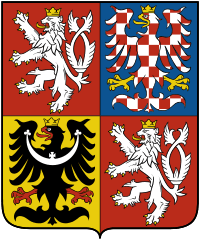Renovation and Rehabilitation of St James’s Church In Unesco World Heritage Site Kutná Hora

Published
Updated 22-12-2014
- region changed
| Region | National coverage |
|---|---|
| Title of the Programme | CZ06 - Culture |
| Title of the Programme Area |
Cultural Heritage and Contemporary Art - programme area no. 16 |
| Title of the Project | Renovation and Rehabilitation of St James’s Church In Unesco World Heritage Site Kutná Hora |
| Project Website | |
| Number of the Project | --- |
| Project Promoter |
Roman Catholic Parish - Archdeanery of Kutná Hora |
| Name of Norwegian Partner(s) |
Association for Employers in the Church of Norway, Dept. for Church Buildings and Heritage (KA) |
| Name of Local Partner(s) |
Benedictine Archabbey of St. Adalbert and St. Margaret Bishopric of Hradec Králové UNESCO Czech Heritage Municipality of Kutná Hora Municipality of Horní Maršov Roman Catholc Parish by the Church of St. James in Brno Pardubice University - Faculty of Restoration Brno University of Technology |
| Objective of the Project |
The applicant - the Roman catholic parish - arch-deanery in Kutná Hora, in response to this call, submits the project of “Renewal and Rehabilitation of St Jacob’s church in Kutná Hora – UNESCO monument”. The church and its asymmetric pair of towers in counterpoint with St. Barbara’s cathedral form the unique skyline of the historic town of Kutná Hora. The project represents another stage of the overall renewal of the church started in 2010. In the case of the submitted project, regarding the parameters of the northern tower - height 85 m - and situation of the church in the middle of dense historic housing the project will be a technologically and logistically exceptionally complex construction and conservation event. The building reconstruction is based on the main principle of respect for the preserved historic structures and architectural elements. New interventions are minimised and only include conservation and replacement of structures past their EOL with their replicas. Renewal of the towers and the western front of St. Jacob’s church addresses serious static defects of the northern tower walls, defects of gothic stone reveals with missing original tracery and signs of their strong damage with fire. The renewal will be based on the preserved condition of the front, with respect for its historic development, and is aimed at prevention of further degradation of the matter of the stone and the plasters, removal of the non-functional old repairs, especially the disintegrated joint fills and peeling off cement plaster and their replacement with technologically and aesthetically more adequate plasters. In the case of stone elements, in addition to cleaning and conservation, their joint fills will be renewed and plastic and colour retouches will mitigate defects of shape degradation of the stone. The surfaces will be unified with enamel and hydrophobised where needed. The conservation will also include preventive protection against biological and pigeon attacks. The proposed surface finish of the stone was consulted with the project partner - Pardubice University - Conservation Faculty in Litomyšl (Ing. Karol Bayer), with tests performed directly on part of the facade. The repairs and joint fills are often separated from the substrate, creating cracks and caverns where salts may crystallise and other deep destruction of the stone as such may take place. Repair of the stone will include the following technological steps: Detailed survey by conservationists, basic cleaning of deposited dust and pigeon droppings, pre-consolidation, crack repair, other damage repair, washing of the surface with steam with regulated pressure, removal of the gypsum crust, removal of EOL joint fills, desalting of the stone in selected sections, damaged stone consolidation, gluing, replacement of EOL blocks with stone masonry elements, joint filling, colour retouches, biocide treatment and local hydrophobisation. The technological procedure of plaster repair is designed depending on the scope and nature of their damage. The repair design includes a detailed proposal of control and assessment of the individual steps of the renewal in the following sequence: Cleaning, desalting, structural consolidation, accessories, replacements and joint fills, inspection of plaster quality and application methodology. Conservation works will also include repairs of the louvers and louver shutters, door repair, clock face repairs including numbers and hands, and repairs of stained glazing of windows. The tower pair and western front repair will also include repair of the tower clock, locksmith works and protection against birds. The applicant, in cooperation with its Norwegian and Czech partners, will also address the significant question of wheelchair access to sacral monuments. |
| Approved grant |
approximately 1 101 736 EUR |
| Project Duration | Start date: 1st January 2015, End date: 30th April 2016 |

